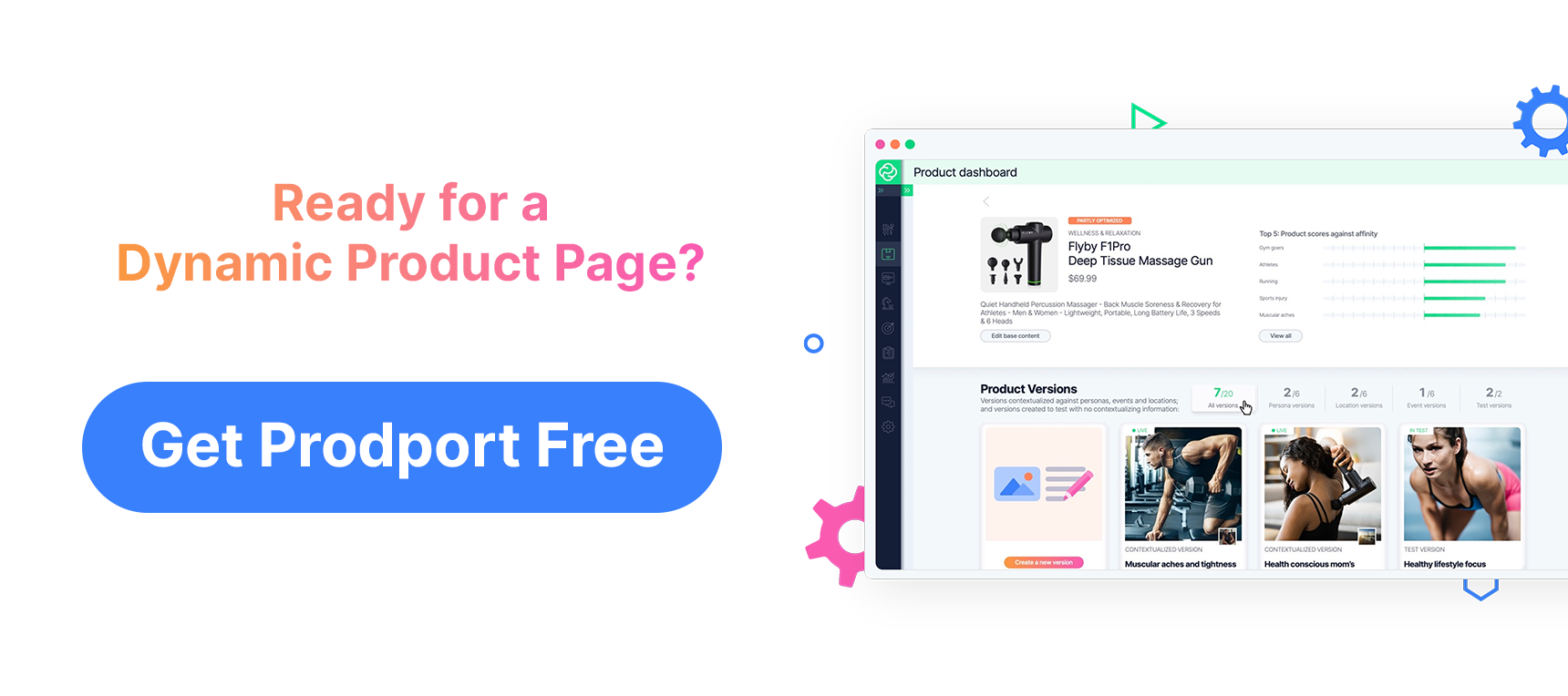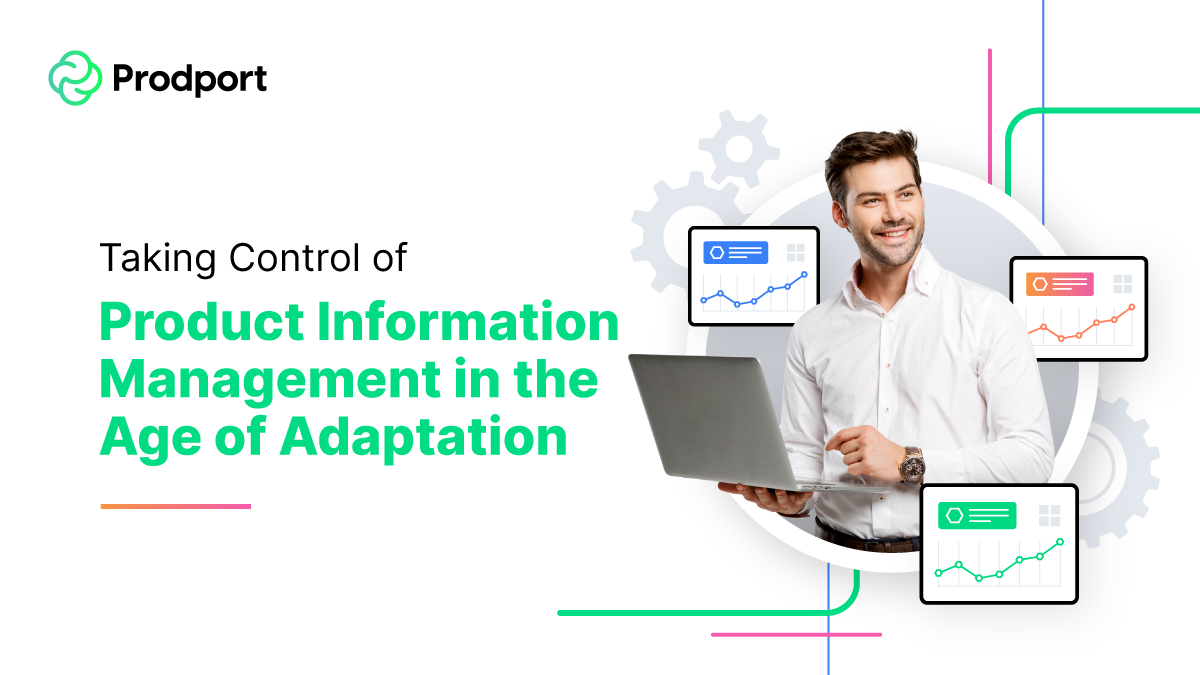E-commerce website users now expect to have all the information they might need to make a decision right away – and that it will be tailored to their needs.
With the product and customer data scattered around multiple systems and tools, though, this might be quite a hard task for e-commerce brands – especially if you sell a wide range of distinct products.
Solution? Product Information Management or PIM in short.
What is it, and how can it help you give your shoppers the information they need at any time they want? Here’s everything you need to know.
What is product information management?
Product Information Management system (or PIM for short) is a method in which businesses gather, organize, and store in a single platform all of their product-related data:
- Product descriptions, translations, and SKU
- Prices
- Specifications and product attributes (such as variations)
- Customer reviews
- Digital assets such as images, videos, or any other relevant product content
The goal here is to have a single source of truth for all essential product details, which brands can then easily update and share between different ecommerce channels – like their stores on ecommerce platforms, social media platforms, or print catalogs. All to give their customers enough information to make an informed shopping decision and thus boost their confidence – quickly, reliably, and consistently.
Why do businesses need PIM?
Managing the product catalogs manually (say, through spreadsheets) might be a viable option if you only have one or two product lines. Once you start to grow your businesses though, then keeping track of where you have what product data and what needs to be updated becomes quite a hassle. It becomes even more complicated when managing complex product specifications for dozens of product types – and the data is spread across multiple places.
One study from Forrester found that employees spend around 11.6 hours every week just searching for key information. That’s actually the No. 1 reason why employees say they’re feeling disengaged at work.
But what’s an even bigger problem is that the scattered product specs also make it nearly impossible to find out what your customers expect from you – and without the data, it will be hard to create fully personalized and engaging content. Getting fully customized offers and recommendations is one of the biggest customer expectations though – and not meeting those can lead them to simply look for another store.
In their Insight Study, Forbes found that:
- 71% of consumers feel frustrated when a shopping experience is impersonal
- 74% of customers feel frustrated when website content is not personalized
- 70% of millennials are frustrated with brands sending irrelevant emails.
Product Information Management can help with both of those problems.
What businesses can gain from working with PIM?
One centralized product platform for all the data you might use
With PIM, you no longer have to rely on multiple systems or several spreadsheets to store information about your products. Instead, you can have the complete product data in one centralized location, neatly organized. That makes it much faster and easier to find any product information or asset you might need at the moment.
Consistency
The second benefit that comes with PIM is that you can give your customers consistent and accurate product information no matter what channel they are using. What shoppers want nowadays is to get as much product information as possible in the least amount of time. And PIM can give them exactly this – always relevant product details and consistent customer experience across all sales channels.
Effortless updates
Updating and refreshing your product pages can also be far smoother with PIM. Since you have the entire data in one central database, you can quickly find the product details (like price or descriptions) you need and update them with a few clicks. Better yet, the updates will be automatically shared across all distribution channels you use, so your shoppers will always have the latest information.
Time savings
Trying to handle all tasks included in running an ecommerce business might sometimes make you wish that a day was longer than 24 hours. That’s actually something PIM can do for you by handling many time-consuming, manual tasks for your staff. For example, how long would it take you to share information about your new product line across 6 channels? Or to create tailor-fit product recommendations for your shoppers?
PIM can do those tasks in a few seconds – letting you focus on more important aspects of running a business.
Not to mention, your entire product team will surely be glad to have no longer to add, update and verify the data inside multiple spreadsheets.
Better results from marketing efforts
With the entire data in a single location, you can finally see who your shoppers really are and what they expect from you. And then, crafting and delivering more targeted and personalized content to share on your marketing channels is a walk in the park.
You can make creating personalized experiences for your audience even easier with the Prodport platform that you can easily integrate into your ecommerce store.
For example, you can use one of its key features, AI Creative Insights, to analyze the customer data and then suggest the best visuals and channels for each of your shoppers. Or maybe you would like to automatically customize everything element on your product page (like product titles or images) based on who your customers are? That’s something Prodport AI can do as well.

Improved customer experience
Last but not least – implementing PIM can have a tremendously positive effect on your customer’s experience for a few reasons:
- With rich product pages and descriptions, shoppers can easily find the product that matches their requirements (and lowers the number of product returns)
- No matter what or how many channels the shoppers will use, they will get a seamless and consistent user experience on all of them
- The entire communication with the shoppers (from marketing messages to support) can be personalized thanks to the wealth of customer data inside the PIM database.
Instead of a basic product page, you can give them a tailor-fit, immersive shopping experience that will turn “just browsing” shoppers into customers. And that’s without doubling or tripling your staff’s workload – because PIM will handle the heavy lifting for them.
How PIM can boost customer experience – practical example
Let’s say that you want to buy a tin of high-quality tea as a present. You’re looking for a quality product, and so you won’t mind paying a little extra. But first, you want to know more about the product:
- From what plantation the tea came from?
- Is it the first or second flush?
- Is it Fairtrade? Organic?
- What is the best way to brew it?
You did find one product that looks appealing, but the product page only has very basic info about it, and it doesn’t answer any of the questions above. On another page meanwhile, you find not only answers to all your questions but there’s even an interactive map with the plantation marked on it – and you can read more about the conditions the tea was grown and harvested. The question of which website you will pick for the purchase is probably obvious – the second one.
With the help of Product Information Management, you could give your own customers a similarly outstanding customer experience.
And by combining the powers of PIM with product content management and personalization platform Prodport, you could elevate your shoppers’ experience even further. The entire product page (design, copy, and visuals) can be automatically customized to suit the preferences of all individual shoppers – and with just a few clicks.
Do you want to see it with your own eyes? You can visit our demo page or schedule a call with our sales team – and then they will show how you just how much you could gain from “hiring” Prodsport as your dedicated personalization assistant.
Conclusion
Consumers nowadays expect nothing less than an outstanding shopping experience. With the PIM platform though, giving them exactly what they want and whenever they want couldn’t be easier. And the happier you can make your shoppers, the more likely they will come back – and recommend your business to others.
Product information management FAQ
What is product information management (PIM)?
Product Information Management (PIM) is a system that helps businesses organize and store all their product data in one place. That way, companies can be sure they have accurate and consistent product information (such as specifications, descriptions, product categories, and images) readily available for various sales channels.
Is PIM important for businesses?
Nowadays, it’s essential as it can help companies give a far better experience to their shoppers. By streamlining product data management tasks, PIM can significantly reduce the number of errors and inconsistencies in the data, boosting product data quality. But it can also make it much easier to update, enrich, and distribute product information across multiple channels.
How does PIM benefit product managers and marketers?
In several ways. For example, with a central source for all product data, marketers can easily access any data they might need to create and optimize product listings and digital content for SEO strategy. Product marketers can also use the wealth of customer data to deliver personalized messaging across multiple digital channels, maximizing their reach and impact. For example, they could create tailored messages for different customer groups promoting their new product launch.
Can PIM be integrated with other systems e-commerce sites are using?
Yes, PIM can be integrated with various business applications, such as Customer relationship management, digital asset management, Content Management Systems, or platforms you use for managing your supply chains. That way, you can have one central product platform that has comprehensive, detailed information about all of your products coming from all of those platforms and business channels.
